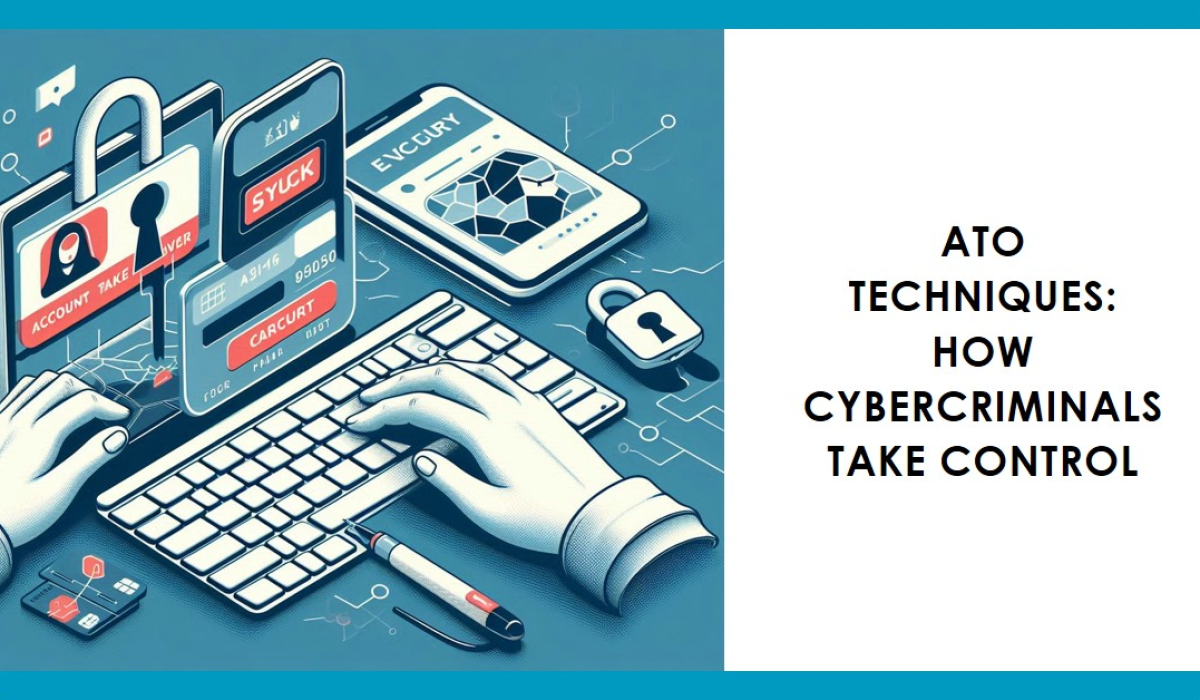ATO (Account Takeover) attacks occur when malicious actors gain unauthorized access to legitimate user accounts. These attacks can have severe consequences for both individuals and organizations:
For individuals:
- Financial losses
- Identity theft
- Reputational damage
- Loss of personal data
For organizations:
- Financial losses from fraud
- Damage to brand reputation
- Loss of customer trust
- Potential legal and regulatory consequences
ATO attacks have become increasingly prevalent due to:
- Stolen credentials: Large-scale data breaches expose millions of usernames and passwords, which attackers can use to attempt access on various platforms.
- Social engineering: Sophisticated phishing and manipulation techniques trick users into revealing their login information.
ATO techniques used by cybercriminals:
- Credential Stuffing
- Method: Attackers use large lists of stolen username/password combinations to attempt logins across multiple sites.
- Example: In 2016, Netflix saw a surge in ATO attempts using credentials from previous breaches at other companies.
- Brute Force Attacks
- Method: Systematically trying many password combinations until finding the correct one.
- Example: In 2013, GitHub faced a large-scale brute force attack attempting to crack user passwords.
- Mobile API Exploitation
- Method: Attackers target vulnerabilities in mobile app APIs to bypass authentication mechanisms.
- Example: In 2018, a flaw in T-Mobile’s website API allowed attackers to access customer data using only phone numbers.
- Phishing and Social Engineering
- Method: Tricking users into revealing their login credentials through fake websites or deceptive communications.
- Example: The 2020 Twitter hack compromised high-profile accounts through a targeted phishing attack on employees.
- Man-in-the-Middle (MitM) Attacks
- Method: Intercepting communication between users and legitimate services to steal login information.
- Example: In 2017, hackers used a MitM attack to steal credentials from several Polish banks.
- Password Spraying
- Method: Trying a small set of common passwords against many different accounts.
- Example: Microsoft reported in 2019 that 73% of its ATO attempts used password spraying.
These techniques are often used in combination or as part of larger, sophisticated attack campaigns. The effectiveness of these methods has led to their widespread adoption by cybercriminals targeting both individuals and organizations.
Targeted Organizations
While financial institutions are often prime targets, it’s crucial to understand that any organization with user accounts is potentially vulnerable. Let’s explore this further:
- Scope of ATO Attacks:
- ATO attacks can target any organization that maintains user accounts, regardless of industry or size.
- The goal is often to exploit valuable data, access services, or use the compromised account for further malicious activities.
- Vulnerable Sectors: a) Public Services:
- Government portals
- Social security systems
- Tax filing platforms
- Voting systems
- b) Healthcare:
- Patient portals
- Health insurance accounts
- Telemedicine platforms
- Medical record systems
- c) Academia:
- University student accounts
- Online learning platforms
- Research databases
- Alumni networks
- d) E-commerce and Retail:
- Online shopping accounts
- Loyalty programs
- Digital wallets
- e) Social Media:
- Personal and business accounts
- Influencer profiles
- f) Telecommunications:
- Mobile carrier accounts
- Internet service provider portals
- Why These Sectors Are Targeted:
- Valuable personal data
- Access to sensitive information
- Potential for financial fraud
- Opportunities for identity theft
- Platforms for spreading misinformation or malware
- Consequences in Non-Financial Sectors:
- Healthcare: Compromised medical privacy, potential for insurance fraud
- Academia: Access to research data, potential for academic fraud
- Public Services: Identity theft, fraudulent benefit claims
The diversity of targeted sectors underscores the need for robust security measures across all industries that maintain user accounts. It’s not just about protecting financial assets, but also safeguarding personal data, intellectual property, and critical infrastructure.
ATO Prevention Strategies
overview of key ATO prevention strategies:
- Strong Passwords:
- Encourage complex, unique passwords for each account
- Recommend password managers to help users create and store strong passwords
- Implement password strength meters and enforce minimum complexity requirements
- Multi-Factor Authentication (MFA):
- Implement MFA across all user accounts
- Offer various MFA options (SMS, authenticator apps, hardware tokens)
- Consider making MFA mandatory for high-risk actions or accounts
- Monitoring and Rate Limits:
- Implement real-time monitoring for suspicious account activity
- Set up alerts for logins from new devices or unusual locations
- Establish rate limits to prevent automated login attempts
- Use risk-based authentication to adjust security based on context
- Educate Users:
- Provide regular security awareness training
- Send updates on emerging threats and best practices
- Offer guidance on recognizing phishing attempts and social engineering tactics
- Additional Technical Measures:
- Use CAPTCHA to prevent automated attacks
- Implement secure session management
- Regularly update and patch systems to address vulnerabilities
- Employ encryption for data in transit and at rest
- Account Recovery and Reset Procedures:
- Implement secure account recovery methods
- Avoid using easily guessable security questions
- Notify users of all account changes via a secondary channel
- Continuous Risk Assessment:
- Regularly audit and test security measures
- Stay informed about new ATO techniques and adapt defenses accordingly
- Behavioral Analysis:
- Use AI and machine learning to detect anomalous user behavior
- Implement adaptive authentication based on user patterns
Case Studies and Statistics
Real-world examples of successful ATO prevention:
- Dropbox implementation of Universal 2nd Factor (U2F)
- Result: 99% reduction in ATO incidents
- Google’s adoption of hardware security keys for employees
- Outcome: Zero successful phishing attacks since implementation
Statistics on ATO impact and prevention:
- According to a 2021 report, ATO attacks increased by 307% between 2019 and 2020
- Enterprises using MFA report 99.9% fewer ATO incidents (Microsoft)
- 80% of data breaches can be prevented with basic actions like MFA (Verizon)
- Organizations with a formal security awareness program are 70% less likely to experience ATO attacks
Conclusion
Recap: ATO attacks pose a significant threat to individuals and organizations across various sectors. The financial, reputational, and operational impacts can be severe. However, effective prevention strategies exist and have proven successful when properly implemented.
Key takeaways:
- ATO is a widespread problem affecting diverse industries
- Credential theft and social engineering are primary attack vectors
- Multi-layered security approaches are most effective
Call to action:
- Assess your current account security measures
- Implement strong authentication methods, especially MFA
- Regularly educate users about security best practices
- Stay informed about emerging threats and adapt defenses accordingly
By taking proactive steps to strengthen account security, individuals and organizations can significantly reduce their risk of falling victim to ATO attacks. Remember, cybersecurity is an ongoing process that requires constant vigilance and adaptation.





